Electric or induction hob: which is better and how are they different?
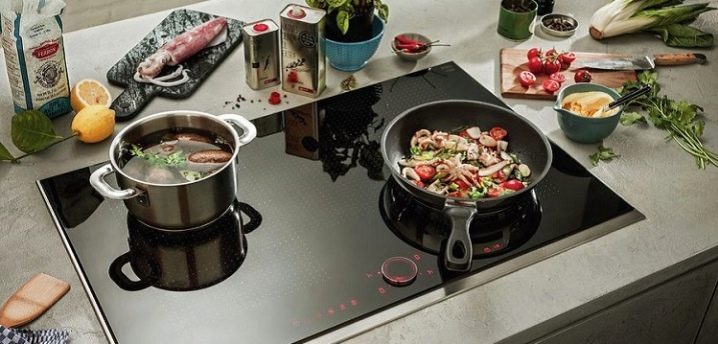
Cooking food is an integral part of our life, because food allows us to maintain life and get pleasant emotions from the process of taking it. Today there are quite a few methods of cooking food, as well as various technical devices. Each of them has its own characteristics, pros and cons. You should consider what are the hobs of the two most popular categories - electric and induction, as well as understand their differences and find out which one will be better.
Peculiarities
Both one and the other hob have their own characteristics, ranging from appearance and ending with the principle due to which their use is generally possible. It is worth considering the features of each option in more detail.
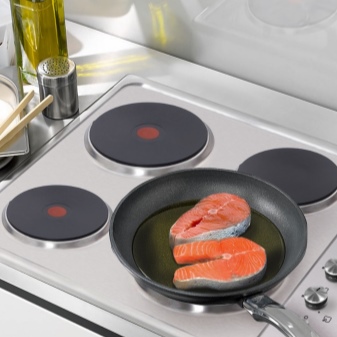
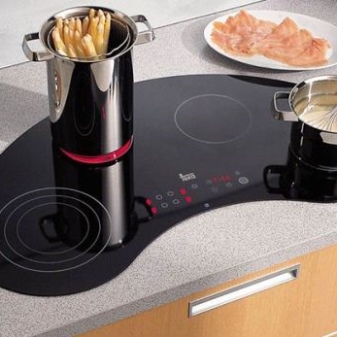
Electric
The main feature of this category of hobs is that the heat source in this case is electricity. They can be of several types.
- Cast iron burners. This type is considered traditional, but it is used less and less, since structurally this option has outlived itself.

- Rapid burners. In this case, a special spiral is used, designed to work with high temperatures, which can heat up in 10-15 seconds and cool down in about the specified time.

- Hi-Light type burners are serpentine special elements made of certain special alloys.
In this case, heating is carried out in 3-5 seconds, but electricity consumption will be significantly higher.

- Halogen burners. Inside them are tubes filled with halogen vapors. When steam passes through, they begin to emit light and infrared radiation, which allows you to cook food.
In general, the main feature of such a hob will be the use of electricity, as well as its rather high consumption. At the same time, their use makes it possible not to cook food as quickly as, for example, on gas, where there is an open fire.


Induction
The principle of using this type of burner is based on the use of the so-called electromagnetic field or induction. This category of hobs, in fact, works somewhere like the work of ordinary microwave ovens. Glass ceramics, which are used here, is, in fact, a dielectric, because the electromagnetic field is transmitted upwards, directly to the bottom of the dishes used. This is how food is cooked, because the generated field of the electromagnetic type induces vortex-type currents in the dishes and heats it, also heating the food.
Panels in this category provide a fairly accurate heating temperature and a serious heating gradation - 50-3500 W. And also a feature will be that a person will never burn himself on such a surface due to the absence of an open source of fire.
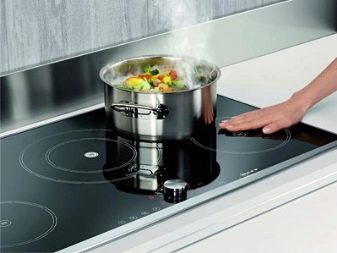

Advantages and disadvantages
As you can see from the above, those that other hobs have certain features in operation and differ somewhat from one another in terms of characteristics and operating capabilities. And it is logical that, like any technique, they have advantages and disadvantages, which it will not be superfluous to say.
Electric
If we talk about electric cooking solutions, then in our country they are quite widespread and are not even inferior to gas solutions in popularity. If we talk about the advantages of this category, then the following should be mentioned:
- the absence of combustion products, in contrast to the aforementioned gas analogue;
- work almost silently;
- easy and convenient to use;
- a large assortment not only in colors and designs, but also in heating elements, the number of burners, the type of control, and so on;
- fairly affordable price for most consumers.


If we talk about the shortcomings, then the following should be named:
- rather serious consumption of electrical energy;
- in some cases, rather long heating of thermal elements - about 4–5 minutes;
- strong heat can cause accidental burns;
- boiling of water occurs somewhere in 10-15 minutes after the start of the system;
- such panels cool for a long time, which can cause the formation of a greenhouse effect in the kitchen in the summer;
- such panels do not have deflections, if some liquid spills, then the panel will completely fill;
- for normal work with them, you will need dishes, the diameter of which will be comparable to the size of the working surface.


Induction
Now let's talk about the advantages and disadvantages of specific induction cooking options. If we talk about the pros, then the following should be called:
- low power consumption;
- the surface of the burners is heated from the dishes to a level of no more than + 50– + 60 degrees;
- if there is no water in the dishes, then the automation switches off the power supply;
- the dishes are heated within 60 seconds thanks to the use of eddy magnetic currents;
- the entire surface remains cold during cooking;
- water boils 5 minutes after turning on the system;
- high level of safety - if any small objects fall on the stove, then the burners simply do not turn on;
- the system has several operating modes.
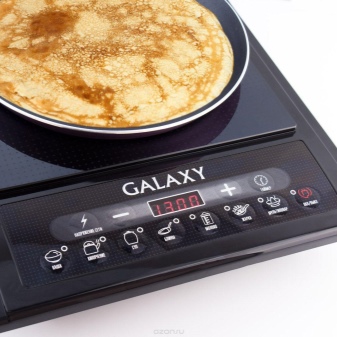
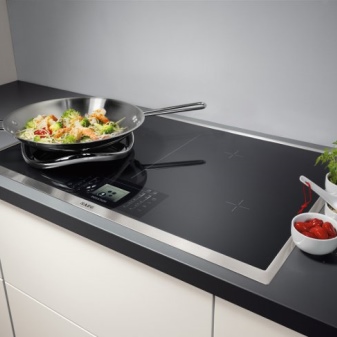
But, despite the rather serious advantages, induction cooking solutions have the following disadvantages:
- rather high cost;
- it is necessary to use only special dishes made of ferromagnetic alloys or cast iron, which also costs more than usual;
- coils may emit a slight hum during operation;
- the surface of such a panel is extremely unstable to physical impact - it splits immediately, which makes it impossible to further use it.

What is the difference?
Now that we have examined in detail each of the hob options, and also found out their strengths and weaknesses, it will not be superfluous to compare these surfaces in order to understand what exactly is the difference between them, because the difference between one model and another can be a decisive factor. when choosing. The main difference between these two categories is how they work. For some unknown reason, many users believe that the main difference between induction and electricity is that the former is smart and has a lot of functions, while the latter will be simpler.


To some extent, there is some truth in this statement, but it is insignificant. The main thing will be that the models have completely different heating elements. The panel is electrically heated thanks to the so-called passing current. That is, first the panel itself heats up, and only then the dishes are heated directly.
The induction hob is a new addition to the kitchen appliances market. In this case, the role of the heater was given to a special induction coil, under which an electric current flows at a purity of 20–60 kilohertz. As a result, an electromagnetic field is created, which excites atoms in the crystal lattice of the dishes, due to which it is heated.
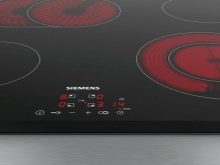


It is heating that provides a high share of differences between one type of panel from another, namely:
- the induction solution has an efficiency of 90 percent, while the electric stove has only 30 percent;
- induction cooking solutions consume electrical energy more economically, about 4 times;
- an induction cooker remains completely cold, unlike an electric one; in the first case, this reduces to zero the risk of getting any burn;
- induction, unlike an electric panel, provides a significantly higher cooking speed - one and a half liters of water boils in just 3 minutes;
- if desired, on the induction panel, you can reduce the heating to a minimum, which allows you to replace the so-called water bath; in the case of using a gas panel, this would be impossible;
- the high safety of the induction cooker is explained by the fact that if there are no dishes on it or the dishes are empty, then it simply will not turn on;
- if food gets on the surface of an induction cooker, unlike an electric cooker, they will never burn;
- the induction hob will have significantly higher control over cooking - depending on the model, there can be up to 14 power adjustment levels.

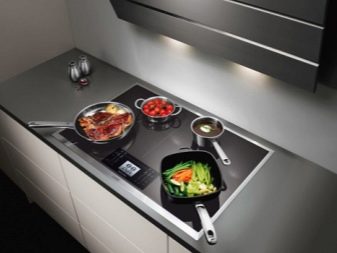
Important! An induction hob will consume less electricity and cook food faster. That is, to put it simply, now it will not be possible to cut cabbage for borscht while, say, the meat is being cooked. Now everything will need to be prepared in advance.
But at the same time, it should be said that there are a number of other aspects, namely:
- when using an electric hob, you do not need to buy special dishes that can be magnetized;
- the electric hob can be connected to the electrical network using a regular outlet, and for induction only a power one is required, which is designed for a current of more than 16 amperes, and such sockets are usually connected via a 3-phase connection;
- electric hobs are cheaper than induction; the same will apply to repairs.


It will not be superfluous to make a comparison for a number of other parameters.
- If we draw parallels precisely in the technical part, then both options operate mainly from the electrical network, except for combined solutions, but the efficiency of induction options will be higher. That is, the energy losses of this type will be minimal. It is also important that if the electrical option consumes energy immediately, as soon as you plug it into the network, then the induction will begin to do this only after the container for cooking food is placed on it.
- If we talk about ease of use, then the situation will be such that if a specific burner is used on an electrical solution, then nothing can be done next to it due to the absence of a heating point. In the case of an induction solution, everything will be exactly the opposite - you can use the entire area of the hob at once, and in expensive models it will generally be possible to adjust a specific area to the required temperature.
- If we compare in terms of cost, it is clear that induction solutions will be more expensive. But their price is gradually decreasing. Savings will allow, over time, to "recoup" all costs by saving electricity.
- If we consider these options for ease of maintenance, then the induction solution will also be better. Ceramic or tempered glass is very easy to clean, there are no cavities, which makes cleaning the equipment really easy and not time-consuming.

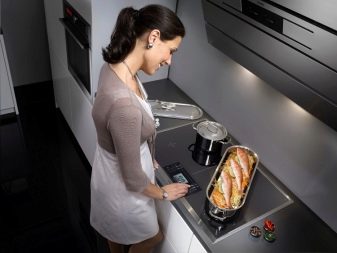
Which one is better to choose?
Now let's deal with the main question regarding which panel is better to choose in order to get maximum efficiency for reasonable money. To make the right choice, you should make it according to the following criteria:
- control - it can be mechanical or touch; if the control is touch, then it will be much easier to take care of the hob;
- availability of a ready timer food - if this function is there, then you can not be afraid that the food will burn during cooking;
- wait timer - this function allows you to automatically stop heating if you need to add something or move away somewhere;
- blocking of turning on of equipment - this function will be extremely useful if there are small children in the house;
- recipe memory - the device can remember what temperature and time is needed to cook a particular dish, which will be convenient if you often have to cook the same food;
- presence of a bridge - this function allows you to combine two burners located next to each other to heat dishes that have large volumes and sizes;
- residual heat indicator - this indicator is activated when the burner is heated to a sufficient level for cooking food and turns on when it cools down to a temperature that will be safe for humans;
- Hob2Hood mechanism - in this case, using IR communication, the panel is synchronized with the special hood, which also supports this function; depending on the intensity of cooking, it becomes possible to regulate the fan speed;
- PowerBoost function - it is available, however, only for induction hobs, and allows you to temporarily increase the power of a particular hotplate to the maximum.


And also the manufacturer of such equipment will be quite important. In general, the models presented on the market can be conditionally divided into three price segments, such as:
- expensive;
- average;
- cheap.
In the first price category there are products of such brands as Kuppersbusch, Gaggenau, AEG, Miele. That is, most of them are German brands, many of which are not very well known. If we talk about the middle class, as the best combination of quality and cost, then we are talking about the products of such manufacturers as Siemens, Bosch, Whirlpool, Zanussi, Electrolux, Gorenje. And the cheapest will be the products of such companies as Ariston, Hansa, Ardo.
If you do not know which model to give preference to, then you can purchase combined solutions that combine classic electric burners, induction solutions or gas solutions. According to the number, you can pick up various models and combinations.
If we talk about a specific choice, then when comparing a classic electric hob with an induction option, it can be argued that it is precisely the last option that will win in terms of functional characteristics.






But if you look at it from the point of view of practicality and cost, then everything will not be so simple. The induction model will cost more, and if it breaks down, repair work will drag out about 50 percent of the cost of new equipment. But this version of the hob makes it possible to save quite a lot on electricity bills.that in the conditions of constantly increasing utility tariffs, in particular, for electricity, there will be a rather serious opportunity for savings. And over time, it may even happen that the induction hob completely pays for itself thanks to this. And the purchase of such serious kitchen equipment is usually not carried out for a day or a month.
It should be said that the choice of this or that type of hob should be carried out in a very high quality and balanced manner, depending on the individual needs of your family, energy consumption, willingness to spend money on new dishes, and so on.

If you look from the point of view of simplicity, then electric models will be better, and if from the point of view of efficiency, energy saving and manufacturability, then induction options. But the choice is definitely up to the user.
In the next video, you will find a comparison of induction and electric cookers.











The comment was sent successfully.